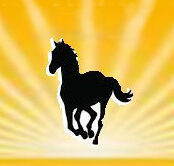What can one say about the weather?
Appalling?
Dreadful?
Dire?
Unnatural?
I know this is England and this is what can be expected but Really Now! Although the permanent topic of English conversation, the unbelievable amount of rain does cause real problems for those of us who work with and love horses. So what can we do when we live and work in a slurry of mud?
The single most important thing you do is to keep your horse’s legs clean. There is a nasty little illness called Mud Fever and it is caused by the bacteria in the mud. This bacteria infects the horses skin causing painful swelling and scabbing. If your horse gets Mud Fever, then a period of box rest and topical salves are needed. There are several that can be purchased OTC at your local tack shop and I have know some folks to use sudocreme. What is important is that the infection is treated quickly. Severe cases will need to be treated by your Vet. Washing your horse’s legs is not a 100% guarantee that he or she won’t develop Mud Fever, but it is most definitely the easiest preventative measure.
If your horse does not have Mud Fever and you want to turn him/her out, then be aware of how slippery it is. If you are slipping on your two legs, imagine how it must feel for those who have twice as many to contend with! Mix the mud with the joys of spring emotions and you have a recipe for disaster. I watched one of our big boys (17hh & 630kg) take a fall by the gate and it was very scary. Equines are renown for their sure-footedness. We as riders depend on this. It is both dangerous and terrifying for them to hit the ground. Not only was he covered in mud, he had it up his nose. Remember that horses can’t breathe through their mouths, so he was fast to get his airway clear. We then had to check him over for injury and bring him in. He was fine, but the next day, we had an excited and frightened horse to take to the field. Remember to go slow and that you pick the speed to get to the field, not them. Go Slow and be calm and confident.
Now this always irritates liveries… Don’t let your horse stand for hours by the gate. Right now everyone’s, and I do mean everyone’s, fields are awful. It is the end of winter. The grass has been eaten down to nothing (unless you have 1 horse and lots of acreage). The horses will have churned the field so the field is not in good shape. The gate will be a swamp. Yes, horses should go out. It is natural. But if you are operating on the minimum space for a horse, then you must use logical field management. It might be easier for you, the human, to turn them out and not spend the extra money on hay and bedding, but is it the best for them? I challenge you to go stand in a wet field for 5 hours with nothing to eat and nothing to do because it isn’t safe. I doubt you will find it a fun experience. Right now we are keeping to a minimum turn out time and watching to see if they congregate at the gate. If they do, then they want to come in and get clean and dry. Horses may be animals but they aren’t idiots!
Mr Weatherman says that we are in for a dry period starting next week. I really, really hope he is right! It will take some time for us to dry out. We have lots of field repair to do. Fortunately we rested a field since Christmas so my equine friends will have a place to eat and play. With hope and hard work, we may have the winter fields back in order by June and full of grass by July. All we need is some sunshine.
